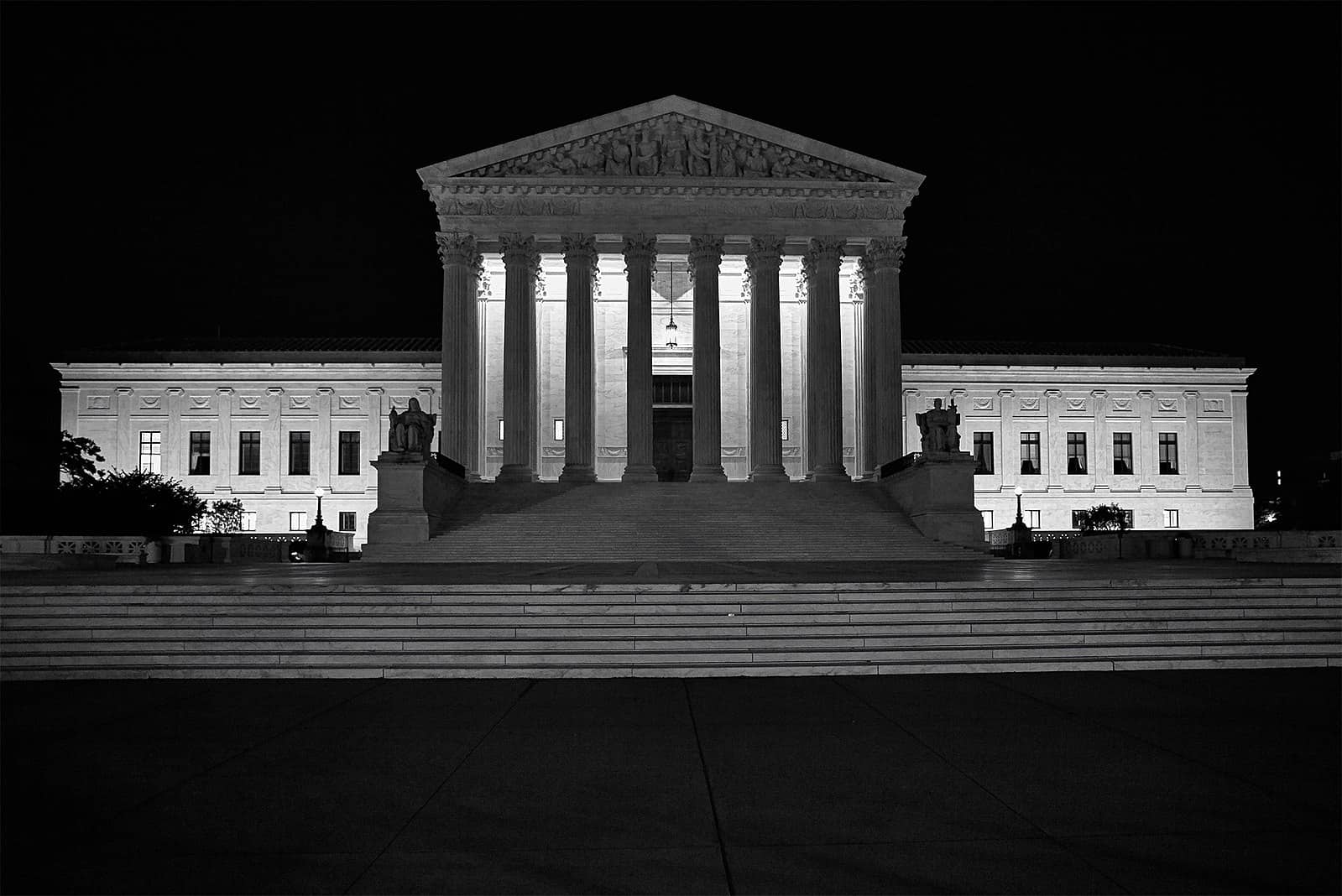
John Fabian Witt is the Allen H. Duffy Class of 1960 Professor of Law at Yale Law School.
For nearly seventy years, the National Labor Relations Act has preempted state law tort suits by employers against employees and their unions when the conduct at issue was “arguably protected” by the Act. But in January the U.S. Supreme Court will hear arguments in a case that may dramatically change this long-standing rule.
Readers of OnLabor have encountered warnings about the possible outcome in Glacier Northwest v. Teamsters Local 174; others who follow labor law closely may have seen similar cautions.
What has been less clear, however, is just how confused and dangerous the state law tort claims at issue in the case really are. An amicus brief I filed this week with Mark Geistfeld of the NYU School of Law shows that the account of preemption offered by counsel for the employer is flawed because it misconceives the basic structure of the tort claims it asserts. If the Court endorses Glacier Northwest’s view, the confusions in its argument will become headaches for strikers — and for courts — for years to come.
* * *
The facts are straightforward. The case arises out of a strike in the summer of 2017 in which concrete mixing-truck drivers belonging to the Teamsters went on strike at Glacier Northwest, leaving trucks that had been filled with fresh concrete that morning. The union instructed those drivers to leave their trucks at Glacier’s facilities with the engines running and the drums rotating so as to prevent the concrete hardening process from accelerating. After managers and non-striking employees discharged the concrete, the trucks were undamaged. But the concrete itself was a loss. It hardened and had to be destroyed.
An exchange of disciplinary letters and unfair labor practice charges ensued between Glacier and the union. But then Glacier took a further step. It sued the union in Washington State court for the loss of the concrete, alleging that the union had violated state tort law by ordering its members off the job when it knew that a strike would destroy the concrete.
The Washington Supreme Court had no difficulty concluding that the uniformity imperatives of the National Labor Relations Act preempted Glacier’s lawsuit under the long-standing law of preemption. But Glacier asked the U.S. Supreme Court to intervene on the ground that the Act does not limit state law’s ability to do the basic work of protecting private property from intentional destruction. Ominously for the union, the U.S. Supreme Court agreed to hear the case.
* * *
Some tort law basics will illustrate that Glacier’s tort theory makes at least two big mistakes — and that these errors, if adopted by the Court, would badly distort the preemption analysis.
First, let’s start with the wrongs alleged by Glacier. The claims in the case invoke classic old common-law torts. Glacier claims that the union committed the tort of conversion and the tort of trespass to chattels, which 20th-century torts jurist William Prosser called conversion’s “little brother.” Conversion essentially prohibits an actor from acting in a way that asserts control over the property of another in such a way as to dispossess the other. Trespass to chattels prohibits the same kind of conduct when it causes damage not amounting to a dispossession.
The characteristic feature of these old tort claims is that they are intensely relational. Among other things, the analysis turns on the contract terms that set the parties’ rights and duties vis-à-vis one another. In a situation like that in Glacier, in which the contract did not explicitly contemplate the eventuality of a strike with fresh concrete in the trucks, courts will have to imply a gap-filling or default term. Such courts are essentially asked to fill in the content of the economic relationship between the parties. Does the employer have the power to keep striking workers on the job long enough to secure all of its putative property interests? Or do workers have a right to strike notwithstanding certain risks to property arising out of such a strike?
The difficulty for any such tort suit is that deciding which economic weapons are available to which party in the collective bargaining relationship is precisely what the Act entrusts to the National Labor Relations Board. That’s why the Supreme Court in San Diego Building Trades v. Garmon held that state tort claims are preempted when the underlying union conduct is “arguably protected” by the Act. Allowing the rights and duties of employers and unions to turn on the variable determinations of state tort law is to allow state courts to determine the scope of the right to strike.
A second problem that the underlying tort claims highlight is that any effort to create an exception for what Glacier styles as “intentional property destruction” is doomed to fail. Glacier would have the law allow tort claims for strikes that intentionally cause harm to the employer. But the very heart of the right to strike is the power to inflict costs on the employer. As torts jurists have observed going back at least to Oliver Wendell Holmes, Jr., the intentional destruction of value is a central feature of competitive behavior in the marketplace. Such destruction is usually only tortious when the law decides, on balance, that it is wrongful, though sometimes such destruction is treated as a tort even when it is prudent or praiseworthy, as when one person causes damage to another by necessity to protect some more important interest. If “intentional destruction” were to become a general exception to preemption under the Act, its scope would be unbounded. Once again, state courts would be in the position of defining the scope of the right to strike under the Act.
* * *
One last dangerous argument lurks at the edges of the Glacier Northwest case. Glacier contends that preemption of its tort claims for intentional destruction would amount to an unconstitutional taking.
But a moment’s reflection on the tort basics rehearsed here show that this cannot be right. The law of intentional torts sets the rights and duties of the parties and thereby regulates the basic terms of economic competition. If the parties have a constitutional right in one or another version of those rights and duties, regulation of the market would be supplanted by judge-made and unalterable constitutional rules. The Congress’s Article I, Section 8 power to regulate interstate commerce would be badly curtailed. So, too, for that matter, would the police powers of states.
Of course, limiting government’s regulatory capacity is precisely one of Glacier’s goals — a goal apparently shared by a substantial fraction of the justices on the Court. American law has tried that before. During the Lochner-era, courts struck down legislative efforts to change basic tort rules in the workplace. Such decisions were quickly reversed in what served as a dress-rehearsal for the Supreme Court’s New Deal retreat from Lochner.
The Glacier Northwest case is unlikely to produce any such great controversy, at least not in the short run. But getting the tort principles at issue right will go a long way toward a better outcome.






Daily News & Commentary
Start your day with our roundup of the latest labor developments. See all
July 7
LA economy deals with fallout from ICE raids; a new appeal challenges the NCAA antitrust settlement; and the EPA places dissenting employees on leave.
July 6
Municipal workers in Philadelphia continue to strike; Zohran Mamdani collects union endorsements; UFCW grocery workers in California and Colorado reach tentative agreements.
July 4
The DOL scraps a Biden-era proposed rule to end subminimum wages for disabled workers; millions will lose access to Medicaid and SNAP due to new proof of work requirements; and states step up in the noncompete policy space.
July 3
California compromises with unions on housing; 11th Circuit rules against transgender teacher; Harvard removes hundreds from grad student union.
July 2
Block, Nanda, and Nayak argue that the NLRA is under attack, harming democracy; the EEOC files a motion to dismiss a lawsuit brought by former EEOC Commissioner Jocelyn Samuels; and SEIU Local 1000 strikes an agreement with the State of California to delay the state's return-to-office executive order for state workers.
July 1
In today’s news and commentary, the Department of Labor proposes to roll back minimum wage and overtime protections for home care workers, a federal judge dismissed a lawsuit by public defenders over a union’s Gaza statements, and Philadelphia’s largest municipal union is on strike for first time in nearly 40 years. On Monday, the U.S. […]